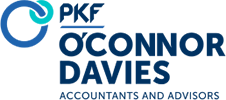Key Takeaways
- The One Big Beautiful Bill Act (OBBBA) restores full expensing of domestic research and experimental costs starting in 2025, easing cash flow pressure for architecture and engineering (A&E) firms, but international expenses must still be capitalized and amortized over 15 years.
- Eligible small businesses can retroactively amend 2022–2024 returns to deduct domestic R&E expenses.
- A&E firms must assess eligibility, consider the catch-up deduction option and coordinate with tax advisors to optimize their tax position under the new rules.
The recently enacted One Big Beautiful Bill Act (OBBBA) introduces key changes to how businesses treat research and experimental (R&E) expenditures under Internal Revenue Code Section 174 (IRC 174). Architecture and engineering (A&E) firms that regularly engage in design innovation, materials testing and modeling now face important updates to their tax planning approach. Here’s what firms should consider as they navigate the new rules.
Cash and Tax Planning
Prior to 2022, research and experimental costs were generally deductible in the year they were incurred, offering a valuable upfront tax benefit to innovative firms. Under the Tax Cuts and Jobs Act of 2017 (TCJA), beginning after December 31, 2021, companies were required to capitalize and amortize R&E expenditures — over five years for domestic activities and 15 years for international activities.
For A&E firms, many of which rely on continuous innovation and problem-solving in design, materials testing, energy modeling and technology integration, this change created substantial challenges. The inability to deduct these costs immediately led to increased tax liabilities, strained cash flow and disrupted long-term financial strategies. Many closely held businesses were forced to dip into reserves, take on new debt or reduce discretionary spending just to meet their tax obligations. For firms already navigating economic pressures and workforce retention issues, the new rules only added to the burden.
Relief Arrives in 2025 and Beyond
In response to these and other emerging challenges, the OBBBA introduces key reform for IRC 174, aimed at easing the financial burden on businesses. The most notable changes include:
- Full Expensing Restored: For tax years beginning after December 31, 2024, domestic R&E expenses are once again fully deductible in the year incurred. Please note: International R&E expenses must still be capitalized and amortized over 15 years.
- Retroactive Election for Small Businesses: Eligible small businesses — those with average gross receipts under $31 million over the three-year period ending December 31, 2024 — may elect to amend their 2022 through 2024 tax returns to deduct domestic R&E expenses in the year incurred. This election must be made and amended returns filed by July 4, 2026.
PKF O’Connor Davies Observation: As of the date of this article, there is no provision in the OBBBA that allows for R&E expenses incurred in 2024 to be expensed on an originally filed 2024 extended tax return. If this is going to be permitted, the IRS will need to issue additional guidance. - Catch-Up Deduction Option: Taxpayers that previously capitalized and amortized domestic R&E expenses for tax years 2022 through 2024 may now elect to expense the remaining unamortized balance over one or two years (2025–2026).
What This Means for A&E Firms
These reforms offer A&E businesses an accelerated opportunity to unlock deductions that were previously deferred — and to align the tax treatment of these costs with how R&E functions in an A&E practice: as a current, recurring business expense. Immediate expensing can significantly enhance liquidity, reduce financing needs and restore alignment between tax strategy and operational reality.
However, the opportunity is not automatic. Firms will need to:
- Confirm eligibility for the small business election by analyzing their gross receipts.
- Determine the correct path forward, as amending tax returns may not be the correct answer for all eligible small businesses.
- Coordinate with tax advisors to ensure accurate and timely elections and amended return filings.
These changes present a valuable opportunity for A&E firms to quickly recover previously lost deductions and enhance cash flow. There is no one-size-fits-all solution, however. With additional IRS guidance expected in the near future, it is essential for businesses to proactively evaluate their specific circumstances and develop a tailored strategy. Firms should consult with their tax advisors as soon as possible to determine eligibility and the best path forward.
Contact Us
If you have any questions or would like assistance to review your particular situation, please contact your client engagement team or:
Catherine Doe, CPA, MST
Partner
cdoe@pkfod.com
Jaron Lariviere, CPA, MST
Partner
jlariviere@pkfod.com
Patrick Trask, CPA, MST
Partner
ptrask@pkfod.com

